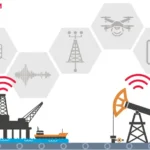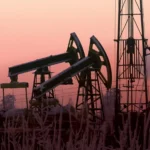Oil and Gas Industry’s Interconnected Role with Global Sectors

Houston, USA
The oil and gas industry serves as a critical backbone for multiple global sectors, influencing energy, manufacturing, transportation, and emerging technology markets in 2025. As the world navigates a projected oil surplus, geopolitical tensions, and the energy transition, the interconnectedness of oil and gas with other industries shapes economic and operational dynamics. This article explores the deep ties between oil and gas and key sectors, highlighting their mutual dependencies and shared challenges.
Petrochemical Industry: A Core Synergy
The petrochemical sector is one of the most significant beneficiaries of oil and gas, with natural gas liquids (NGLs) and crude oil derivatives projected to drive 18–20% of global oil demand by 2040, according to the International Energy Agency. Companies like Saudi Aramco and BASF rely on ethane and naphtha from oil and gas to produce plastics, fertilizers, and chemicals, with global ethylene production expected to reach 200 million metric tons in 2025. In 2024, AI-driven process optimization at petrochemical plants reduced production costs by 7%, but supply chain disruptions and competition from low-cost Middle Eastern producers challenge growth. The sector’s reliance on oil and gas feedstocks underscores its vulnerability to Brent crude price volatility, forecast to drop from $68 per barrel in August 2025 to $50 per barrel in Q1 2026 due to a 1.7 million b/d surplus.
Transportation: Fueling Mobility
The transportation industry remains heavily dependent on oil and gas, with gasoline, diesel, and jet fuel accounting for 60% of global oil consumption in 2024. Major airlines, such as Delta and Emirates, and shipping companies like Maersk rely on oil-derived fuels, though rising fuel costs and environmental regulations are pushing adoption of sustainable aviation fuels (SAF), which use oil byproducts blended with renewables. In 2025, SAF production is expected to grow by 15%, supported by companies like BP investing $500 million in biofuel refineries. Geopolitical risks, including tensions in the Strait of Hormuz, handling 21% of global petroleum liquids, threaten fuel supply chains, impacting transportation costs and logistics.
Electricity Generation: A Transitional Link
Oil and gas play a pivotal role in electricity generation, particularly through natural gas, which powers 25% of global electricity in 2025. Gas-fired power plants in Asia and Europe are critical for meeting rising demand, with global LNG demand peaking at 425 billion cubic meters this year. The electricity sector’s shift to renewables, with solar and wind capacity growing 20% in 2025, mirrors oil and gas companies’ investments in low-carbon technologies like carbon capture, utilization, and storage (CCUS). For instance, ExxonMobil’s LaBarge facility captures 8 million metric tons of CO2 annually, supporting cleaner power generation. However, a potential LNG glut by 2026 could lower gas prices, affecting both industries’ economics.
Manufacturing and Industrial Sectors
Oil and gas are integral to manufacturing, providing energy and raw materials for industries like steel, cement, and automotive production. Natural gas powers 30% of industrial energy needs globally, while oil-derived lubricants and chemicals are essential for machinery and product manufacturing. In 2025, industrial demand for oil and gas is projected to rise by 3%, driven by Asia’s economic growth, though China’s slowdown to 4.6% in Q2 2025 tempers this trend. Digital technologies, such as AI and IoT, are enhancing efficiency across both sectors, with oil refineries and manufacturing plants reporting 8% cost reductions in 2024 through predictive maintenance and process optimization.
Technology and Data Centers: Rising Energy Demand
The technology sector, particularly data centers powering AI and cloud computing, is increasingly reliant on oil and gas for energy. Data centers are expected to consume 8% of global electricity in 2025, with natural gas providing a stable baseload for regions with limited renewable capacity. Companies like Chevron are supplying gas to power tech hubs in the U.S., while oil-derived cooling fluids are critical for data center infrastructure. The sector’s energy demand is driving LNG imports, with Europe’s 23.6% import surge in H1 2025 partly attributed to tech growth. However, both industries face cybersecurity risks, with 350 cyberattacks on oil and data center infrastructure reported in 2024.
Agriculture: Fuel and Fertilizer Dependency
The agriculture industry depends on oil and gas for fuels and petrochemical-derived fertilizers. Diesel powers 80% of global agricultural machinery, while natural gas is a key feedstock for ammonia-based fertilizers, supporting 50% of global food production. In 2025, fertilizer demand is projected to rise by 4%, driven by agricultural expansion in Asia and Africa. Companies like Sinopec are increasing ammonia production, but global supply chain disruptions and oil price volatility pose risks. Precision agriculture is adopting IoT technologies from the oil sector, improving resource efficiency by 10% in 2024.
Workforce and Economic Interdependencies
Both oil and gas and related industries face workforce challenges, with automation leading to 12,000 job cuts in oil and 10,000 in manufacturing and tech in 2024–2025. Retraining programs are transitioning 6,000 oil workers to roles in renewables and tech by 2027, mirroring efforts in other sectors. Mergers and acquisitions (M&A) are also a shared trend, with 70% of oil firms and 65% of tech and manufacturing companies planning deals in 2025 to access technology and markets. The oil industry’s $213 billion in dividends and $136 billion in share buybacks in 2024 reflect economic synergies with high-revenue sectors like tech.
Outlook for 2025
The oil and gas industry’s connections with petrochemicals, transportation, electricity, manufacturing, technology, and agriculture underscore its role as a global economic driver. As these sectors navigate shared challenges like price volatility, geopolitical risks, and sustainability pressures, their interdependence will shape investment and innovation strategies. By leveraging digital technologies and aligning with energy transition goals, oil and gas will remain integral to these industries through 2030.
- Gas Industry







